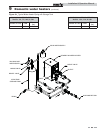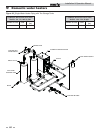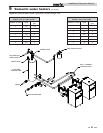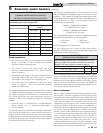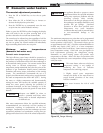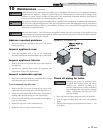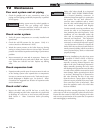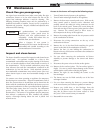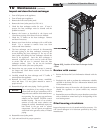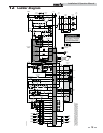
75
Inspect/replace hot surface igniter
1. Turn off main electrical power to the appliance.
2. Turn off main manual gas shutoff to the appliance.
3. Carefully pull back the insulation flaps to expose the burner
mounting flange.
4. Locate the hot surface igniter. Disconnect the two power
leads to the hot surface igniter.
5. Loosen and remove the two wing nuts that mount the
igniter.
6. Lift the igniter vertically out of the burner mounting flange.
Use care, do not hit or break the silicon carbide igniter. Do
not contaminate the igniter by handling with oily or dirty
hands.
7. Check the replacement igniter for cracks or damage before
installing.
8. Ensure that the fiber gasket used to seal the base of the
igniter to the burner flange is reinstalled to seal the base of
the replacement igniter.
9. Carefully insert the igniter into the mounting point on the
burner flange and position on the mounting studs.
10. Reinstall the two wing nuts and tighten by hand only. Over
tightening the wing nuts may break the ceramic mounting
flange.
11. Ensure that the igniter gasket is properly installed and seals
the point of contact between the igniter and burner
mounting flange.
12. Reconnect the power leads to the igniter.
13. Replace the insulation blanket flaps.
14. Turn on main gas supply and main power.
15. Test fire the appliance to ensure proper operation.
Check burner flame
Visually check main burner flames at each start-up after long
shutdown periods or at least every six months. A burner
viewport is located on the burner mounting flange.
Perform start-up and checks
1. Start appliance and perform checks and tests specified in
Section 7 - Start-up.
2. Verify cold fill pressure is correct and that operating
pressure does not go too high.
The area around the burner viewport is hot
and direct contact could result in burns.
ƽ WARNING
Figure 10-2_Flame Pattern Illustration
Normal Flame: A normal flame at 100% of burner input is blue,
with slight yellow tips, a well defined flame and no flame lifting.
Yel low Tip : Yellow tipping can be caused by blockage or partial
obstruction of air flow to the burner.
Yellow Flames: Yellow flames can be caused by blockage of
primary air flow to the burner or excessive gas input. This
condition MUST be corrected immediately.
Lifting Flames: Lifting flames can be caused by over firing the
burner, excessive primary air or high draft.
If improper flame is observed, examine the venting system,
ensure proper gas supply and adequate supply of combustion
and ventilation air.
Check all wiring
1. Inspect all wiring, making sure wires are in good condition
and securely attached.
Check control settings
1. Set the SMART SYSTEM control module display to
Parameter Mode and check all settings. See Section 1 of the
Power-fin Service Manual. Adjust settings if necessary. See
Section 1 of the Power-fin Service Manual for adjustment
procedures.
2. Check settings of external limit controls (if any) and adjust
if necessary.
10 Maintenance (continued)
Installation & Operation Manual



